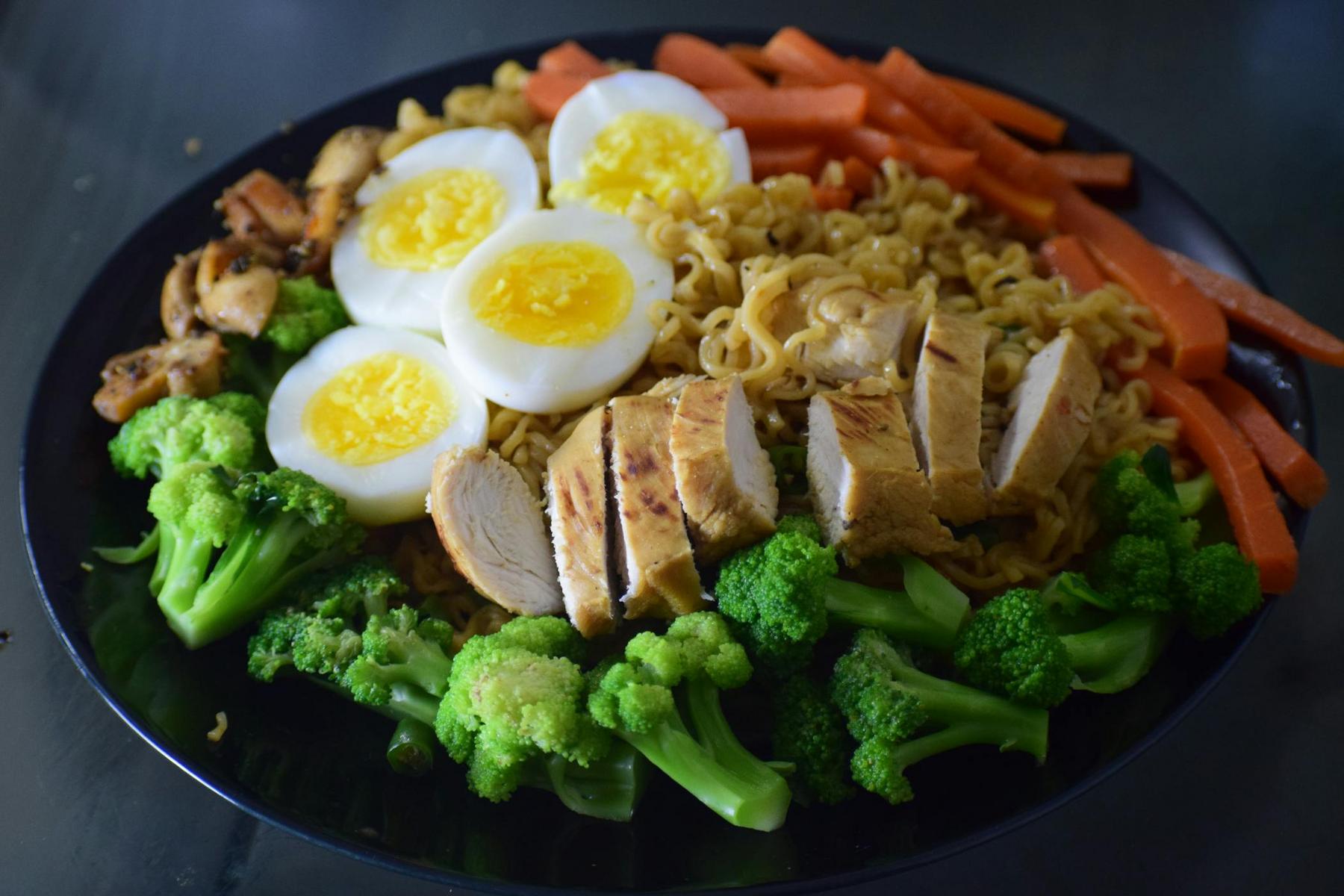The difference between mediocre and exceptional fitness results often lies not just in what you eat, but when you eat it. For many Australians pursuing fitness goals, the frustration of plateaued progress persists despite consistent training and general healthy eating. The missing piece? Strategic nutrient timing. Research shows that properly timed pre- and post-workout nutrition can enhance performance by 15-30% and reduce recovery time by up to 24 hours. With exercise-induced metabolic windows creating unique opportunities for nutrient utilisation, understanding the science of meal timing around workouts becomes crucial for optimising your fitness journey.
What Is Nutrient Timing and Why Is It Critical for Performance?
Nutrient timing refers to the strategic consumption of specific nutrients at particular times in relation to physical activity. This practice is grounded in understanding how our bodies utilise different energy systems during exercise.
During physical activity, your muscles rely on three primary energy pathways:
- The phosphagen system, providing immediate energy through creatine phosphate stores (lasting 8-10 seconds)
- The glycolytic system, breaking down muscle glycogen for short-term energy (dominating efforts from 30 seconds to 2 minutes)
- Oxidative phosphorylation, utilising fatty acids and carbohydrates for sustained activity
These systems don’t operate in isolation but overlap based on exercise intensity and duration. High-intensity interval training can deplete phosphocreatine stores by 50-70% within just 30 seconds, while endurance activities may reduce muscle glycogen by 40-90% depending on duration.
Exercise also triggers significant hormonal responses that influence nutrient partitioning:
- Insulin sensitivity increases by 25-50% post-exercise, typically peaking at 45 minutes and remaining elevated for up to 48 hours
- Growth hormone secretion amplifies 3-5 fold during resistance training
- Cortisol levels rise proportionally to exercise duration, potentially increasing protein breakdown
These physiological mechanisms create specific “windows of opportunity” where nutrient intake can exert amplified effects on performance, recovery, and adaptation. This isn’t merely about immediate energy but about optimising the body’s use of nutrients for long-term improvements in body composition and performance.
When and What Should You Eat Before a Workout?
Pre-workout nutrition serves two critical purposes: preventing premature fatigue and maintaining optimal blood glucose levels throughout your training session. The ideal timing and composition depend on your specific workout plans and individual tolerance.
Timing Strategies for Pre-Workout Meals
Research indicates that a strategic approach to pre-workout timing can significantly enhance performance:
- 3-4 hours before exercise: This is ideal for a complete meal containing 1.1-2.2 g/kg of complex carbohydrates (such as oats or sweet potatoes), moderate protein, and minimal fat to ensure comfortable digestion.
- 1-2 hours before exercise: A smaller meal with 0.5-1 g/kg of lower-fibre carbohydrates plus a moderate protein source helps top up energy stores without causing gastrointestinal discomfort.
- 30-60 minutes before exercise: A small, easily digestible snack primarily consisting of simple carbohydrates with minimal protein can provide immediate energy.
For early morning exercisers facing the dilemma of training fasted or potentially experiencing digestive discomfort, research shows that consuming 15-30g of whey protein upon waking can reduce overnight muscle protein breakdown by 22-27% while maintaining exercise capacity.
Macronutrient Composition for Optimal Performance
The ideal pre-workout meal combines:
- Complex carbohydrates (55-65% of calories): These serve as the primary fuel for moderate to high-intensity exercise
- Moderate protein (15-20%): Provides amino acids to prevent excessive muscle breakdown
- Minimal fat (<30%): While fats are important for health, they slow digestion and can cause discomfort during exercise
| Time Before Exercise | Meal Composition Example | Primary Purpose |
|---|---|---|
| 3-4 hours | Grilled chicken, quinoa, steamed vegetables (500-700 kcal) | Complete fuelling, fully digested before activity |
| 1-2 hours | Greek yoghurt with honey and berries (300-400 kcal) | Top-up fuel stores, minimal digestive impact |
| 30-60 minutes | Banana with small amount of almond butter (200-250 kcal) | Immediate energy availability |
Hydration status is equally important, with research recommending achieving urine that’s pale yellow in colour (specific gravity <1.020) before exercise begins. Including 300-600 mg of sodium per litre of fluid can enhance water retention by 25-40%, particularly important in Australia's often hot climate.
How Does Post-Workout Nutrition Affect Recovery?
Post-workout nutrition has traditionally been emphasized within a narrow “anabolic window,” but contemporary research provides a more nuanced understanding of recovery nutrition timing and composition.
The Expanded Anabolic Window
Contrary to widespread belief, the post-exercise “anabolic window” extends beyond the traditional 30-60 minute paradigm:
- Glycogen resynthesis maintains peak rates (40-50 mmol/kg ww/h) for 4-6 hours post-exercise when adequate carbohydrates are consumed
- Muscle protein synthesis remains elevated for 24-48 hours following resistance training, though early protein intake amplifies this response by 18-26%
This expanded understanding doesn’t diminish the importance of prompt post-workout nutrition but provides greater flexibility for implementation.
Optimal Post-Workout Nutrient Ratios
Research indicates that specific nutrient compositions maximise recovery:
- Immediate recovery (0-2 hours): 1.0-1.5 g/kg carbohydrates combined with 0.3-0.5 g/kg protein accelerates glycogen replenishment by 40-60% compared to delayed intake
- Extended recovery (2-6 hours): Continuing with meals containing 0.5-1.0 g/kg carbohydrates plus 20-40g protein maintains the recovery process
The type of nutrients consumed also matters. High glycemic index carbohydrates like white rice and potatoes increase glycogen storage rates by 15-20% compared to low glycemic index alternatives in the first 4 hours post-exercise. For protein, those rich in leucine (such as whey, eggs, and salmon) better stimulate muscle protein synthesis.
While liquid nutrition (protein shakes) achieves peak amino acid levels 28% faster than whole food sources, making them ideal for immediate post-workout intake, whole food meals containing complete proteins better sustain muscle protein synthesis over a 24-hour period.
How Should Nutrient Timing Be Personalised for Different Goals?
The one-size-fits-all approach to nutrient timing falls short in addressing individual variability. Several factors necessitate personalisation:
Training Type and Body Composition Goals
Different athletic pursuits demand distinct nutritional approaches:
| Training Type | Pre-Workout Focus | Post-Workout Priority | Why It Matters |
|---|---|---|---|
| Endurance | Carbohydrate loading (8-10 g/kg/day) | Rapid glycogen resynthesis | Sustains energy for long-duration activities |
| Strength/Hypertrophy | Leucine-rich proteins with moderate carbs | Muscle protein synthesis | Supports tissue repair and growth |
| Team Sports | Balanced carb-protein combination | Hydration + electrolyte balance | Addresses mixed energy system demands |
| Weight Management | Moderate protein with controlled carbs | Protein-focused recovery | Supports muscle retention during caloric deficit |
Chronotype Considerations
Emerging research reveals significant differences in nutrient timing efficacy based on individual circadian typology:
- Morning chronotypes (early risers) demonstrate peak glucose tolerance around 08:00 (35% higher than evening types) and achieve 3.1 times greater weight loss with early time-restricted feeding (eating between 6:00-14:00)
- Evening chronotypes perform optimally when workouts occur 3-5 hours after their natural wake time and benefit from 50% higher pre-workout protein intake to compensate for reduced morning anabolic sensitivity
Continuous glucose monitoring studies have revealed 45% inter-individual variability in optimal pre-workout carbohydrate dosing, highlighting the importance of personalisation beyond general guidelines.
For Australians managing weight concerns, integrating personalised nutrient timing with appropriate caloric control has been shown to enhance fat loss outcomes by up to 41% compared to caloric restriction alone.
The Future of Personalised Nutrient Timing
As our understanding of nutritional biochemistry, exercise physiology, and chronobiology deepens, nutrient timing strategies continue to evolve. Current research is exploring:
- Genetic factors influencing individual responses to nutrient timing interventions
- Microbiome influences on nutrient utilisation and timing effects
- Advanced biometric monitoring to deliver real-time nutrient timing recommendations
These developments suggest that future nutrient timing approaches will become increasingly personalised, moving beyond general guidelines to precise, individual recommendations.
For most Australians, implementing even the foundational principles of nutrient timing represents a significant opportunity to enhance performance, support recovery, and optimise body composition outcomes.
How does nutrient timing affect weight management specifically?
Nutrient timing aligns food intake with your body’s natural metabolic rhythms, helping to optimise energy use and improve satiety. Studies show that front-loading calories, such as consuming about 35g of protein at breakfast, can enhance satiety and reduce overall calorie intake, supporting improved fat loss outcomes when combined with caloric control.
Should I prioritise whole foods or supplements for workout nutrition?
Both whole foods and supplements play important roles. Protein supplements like whey can provide rapid amino acid delivery post-workout, while whole foods offer sustained protein release along with essential micronutrients. A balanced approach, using supplements for immediate recovery and whole foods for longer-term nutrition, is typically most effective.
How should I adjust my nutrient timing for morning versus evening workouts?
Your chronotype can influence optimal nutrient timing. Morning exercisers may benefit from a small protein-rich snack right after waking to prevent muscle breakdown, followed by a substantial breakfast post-workout. Evening exercisers should focus on balanced carbohydrate intake throughout the day and a comprehensive post-workout meal to aid recovery without disrupting sleep.
Is fasting before cardio better for fat loss?
While fasted cardio can increase fat oxidation during exercise, overall fat loss is primarily determined by total daily energy balance. For many, properly fuelled workouts allow for higher exercise intensity and duration, leading to a larger caloric deficit over time. A moderate approach that avoids extreme glycogen depletion is generally more sustainable.
How should I adapt nutrient timing if I’m taking weight management medications?
When on weight management medications, it’s important to adjust nutrient timing to preserve muscle mass and optimize overall energy levels. This often involves emphasizing consistent protein intake throughout the day and closely monitoring hunger and satiety signals. Working with healthcare providers can help tailor these strategies to your individual needs and medication effects.



